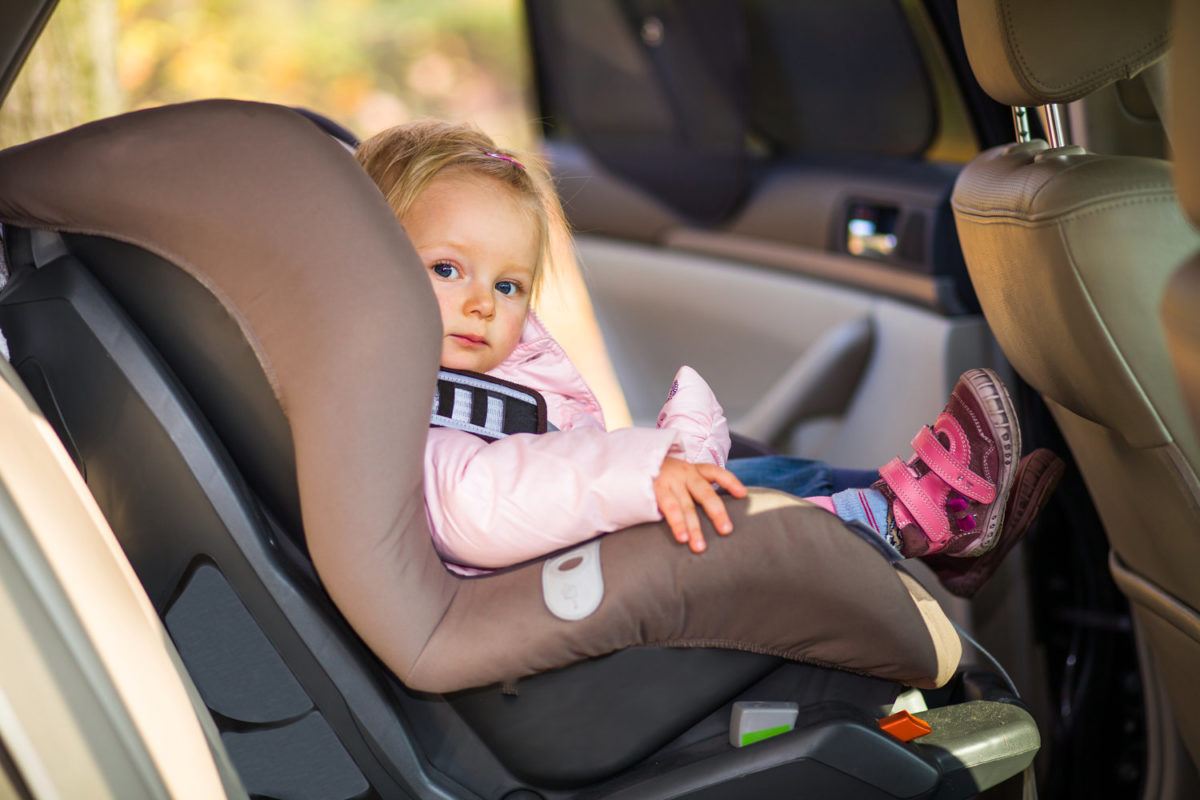
Thousands of children are injured or killed each year because they are not properly secured in child seats. According to the National Highway Traffic Safety Administration (NHTSA), 3 out of 4 (75% of) child safety seats are not used correctly, a surprisingly high number.
Even the most experienced parents and caregivers can make mistakes when installing a child safety seat. When choosing an appropriate seat and ensuring it’s secured correctly, parents, should ask two critical questions:
(1) Which seat is most appropriate for my child?
(2) How do I install the seat and secure my child safely?
Our firm has authored previous blog posts on the first question: What car seat or safety seat is most appropriate for my child? But proper installation is an equally important part of the equation.
It is critical that every parent learn how to properly install their child’s car seat. Common installation problems include:
-
Parents do not realize their vehicle is equipped with a LATCH system or don’t understand how to use LATCH
-
Parents are confused about how to correctly install their child’s seat
-
Parents don’t know that not all vehicles and child seats are created equally and not every child seat fits correctly in every vehicle
The LATCH (Lower Anchors and Tethers for Children) system has made installing child safety seats easier and safer. LATCH is required on all child safety seats and most vehicles manufactured after September 1, 2002. LATCH-equipped child seats fasten directly to the seat using lower anchors and a tether anchor. The lower anchor straps are attached to the rear of the child safety seat. An upper tether strap is located at the top rear of convertible seats, forward-facing seat and combination seats. Most rear-facing infant seats do not have a top tether strap or hook and do not generally use a tether during installation. There are two styles of LATCH connectors: the “hook”-style connector and the “push-on”-style connector.
Where to Place The Child Seat
The rear seat is universally considered the safest place for children of any age to ride. If possible, your child should be placed in the rear center seat location. The rear center seat location places your child the further from all possible collision sites as your child is placed further from the front, the rear and the two sides. But several automakers don’t provide rear center LATCH anchors. Solutions for when this occurs:
-
Position the child seat on either the driver’s or passenger’s side of the vehicle rather than the center of the seat.
-
Position the child seat in the rear center seat using the seat belt for restraint rather than the LATCH anchor system.
-
Some auto makers allow the inboard LATCH anchors from the side seating positions to be used to create a center LATCH seating position. However, parents should check with the child seat manufacturer before doing this.
Common LATCH system installation mistakes include:
-
Failing to install the child safety seat tightly enough
-
Routing the lower anchor strap through the wrong area of the child safety seat
-
Installing the forward-facing seat, but without using the tether strap
-
Using inboard lower LATCH anchors to install a child seat in the rear center position when the vehicle and/or child seat do not permit such installation
-
Using lower LATCH anchors to install a child seat in booster mode where the child is sitting on the seat and using the vehicle’s seat belt across the child’s body
-
Installing the child safety seat using lower LATCH anchor when the child weighs more than 48 pounds
Rear-Facing, Infant-Only Seat – LATCH Install
-
Many parents of newborns like the type of infant car seat that comes with a separate base. The base remains installed in the car while the baby carrier itself can be taken out and snapped back in at will.
-
Infant seat bases usually have flexible LATCH connectors — essentially belts with hooks at the ends.
-
Locate the lower anchors in the second-row window seats. Make sure the car seat lays flat against the seat’s bottom and back, between the lower anchors.
-
Hook the LATCH attachment that is furthest away from you onto the anchor. Then, if possible, climb on top of the seat, putting your knee on top. Using your weight to fully compress the vehicle seat, hook the other attachment to the anchor and pull out the slack. If you can’t get on top of the seat, use all your strength to push down on the seat while hooking on the second attachment.
Rear-Facing, Infant-Only Seat – Standard Should and Lap Belt Installation
What should a consumer do if the car or car seat is an older model and doesn’t feature LATCH? Or what if your car’s seat cushions or anchor placements make LATCH installation impossible? Parents can still do a standard shoulder and lap belt installation that’s perfectly safe.
First, thread the vehicle’s lap and shoulder belt through the correct slots, called the “belt path.” If you have a convertible car seat that reverses from forward-facing to rear-facing, be careful to choose the correct path; it will be clearly marked.
Plug the latch plate (male end of the seatbelt) into the buckle (female end), then, using your weight as above, tighten the belt. Make sure all the slack is taken out of both the lap and the shoulder. Typically, using a locking clip will give you a more secure installation. A locking clip is an H-shaped piece of metal that comes with all new car seats or can be ordered from the manufacturer. To use one, plug the seatbelt in, make it as tight as possible, then unplug it again while holding the belt very tightly. Wind the locking clip around the belt as close as possible to the latch plate, then plug it back in. You may have to bounce down on the seat a few times to get it closed. This won’t be easy, but it will give you a rock-solid installation.
Forward-Facing Toddler Seat – Should and Lap Belt Install
For a shoulder and lap belt installation, thread the vehicle’s lap and shoulder belt through the appropriate belt path.
Buckle the seatbelt. Use your body weight to compress the vehicle seat cushion. If the child seat has a “lock-off” clip — located on the side of the seat — be sure to refer to your instruction manual on how to use it. If it doesn’t have a lock-off clip, pull the shoulder belt slowly all the way out, then let it retract. If you hear clicking sounds, the seatbelt has an automatic locking retractor, and is locking itself. (Some retractors are very quiet, though — if the belt feels rigid after it retracts, the seatbelt is most likely locked.) Pull the belt as tight as possible.
If you can still pull out slack on the belt, you do not have seatbelts that lock automatically and you will need to use a locking clip to secure the seat, same as above. Bear in mind that emergency locking retractors are not the same as automatic ones and, despite their name, must still be locked down with a clip. To use a locking clip, unplug the seatbelt and hold it tight. Wind the locking clip around the belt as close as possible to the latch plate, then plug it back in.
What many people don’t understand is that the lap portion of the seatbelt is the part responsible for keeping the car seat secure. The shoulder belt portion needs to be “locked down” if the lap portion isn’t locked on its own, which is what usually happens. Dodge and Chrysler vehicles, however, have a special mechanism on the lap portion of their shoulder/lap belt that locks the lap belt securely, so that the shoulder belt portion becomes irrelevant.
Conclusion
It’s important to remember that, after a car seat is installed, the seatbelt’s latch plate should NOT lie against the curved opening of the car seat. If it does, try to make the buckle shorter, even if it means twisting it a full turn or two around. If that still doesn’t work, your car seat might not be the right choice for your car.
A child occupant is the most important item in a car at any time, and his/her protection is dependent on the proper installation of a child car seat.


